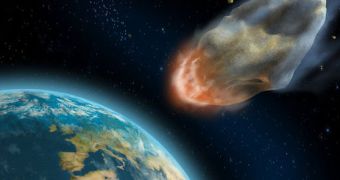Researchers believe that a cosmic impact that took place some 12,900 years ago should be held accountable for the Younger Dryas cooling, i.e. a period of time during which global temperatures dropped to a considerable extent.
Writing in the journal Proceedings of the National Academy of Sciences, scientists explain that, in the aftermath of this sudden cooling of our planet, several animal species inhabiting North America fell off the biodiversity map.
Mastodons, camels, giant ground sloths and saber-toothed cats all went extinct.
As a result, the Clovis people, who relied on them for food, had to switch to surviving on roots, berries and significantly smaller game.
As Professor Mukul Sharma at the University of Dartmouth puts it, “The Younger Dryas cooling is a very intriguing event that impacted human history in a profound manner.”
“Environmental stresses may also have caused Natufians in the Near East to settle down for the first time and pursue agriculture,” he adds.
Mukul Sharma and his fellow researchers suspect that, contrary to popular assumption, this cooling of our planet was not brought about by a sudden change in oceanic currents as a result of a surge of meltwater from the North American ice sheet.
On the contrary, it was caused by either an asteroid or a comet hitting the Earth. The impact occurred in present-day Quebec, Canada, the scientists believe.
Until now, the researchers have not been able to locate a crater that would prove their theory.
However, they have found several spherules, i.e. droplets of solidified molten rock, at sites in Pennsylvania and New Jersey, which they say formed and landed in these regions at the time of the impact.
Thus, the droplets were created at temperatures higher than 2,000 degrees Celsius (3,632 degrees Fahrenheit). Besides, their composition indicates that they originate in southern Quebec.
“This is unequivocal evidence for an impact with Earth,” palaeoceanographer James Kennett says, as cited by Nature.
The researchers plan to continue searching for the crater that must have been created during this impact.
They are confident that, once they find it, they'll be able to shake off all doubts surrounding their theory that the Younger Dryas Deep Freeze was brought about by a cosmic impact.

 14 DAY TRIAL //
14 DAY TRIAL //